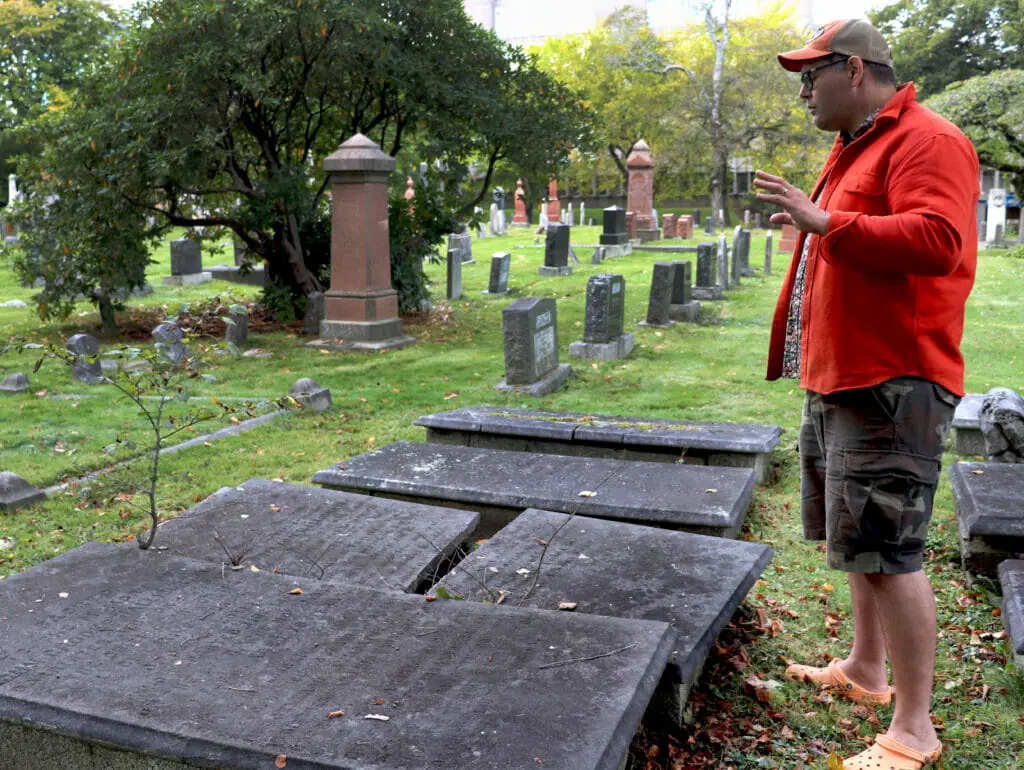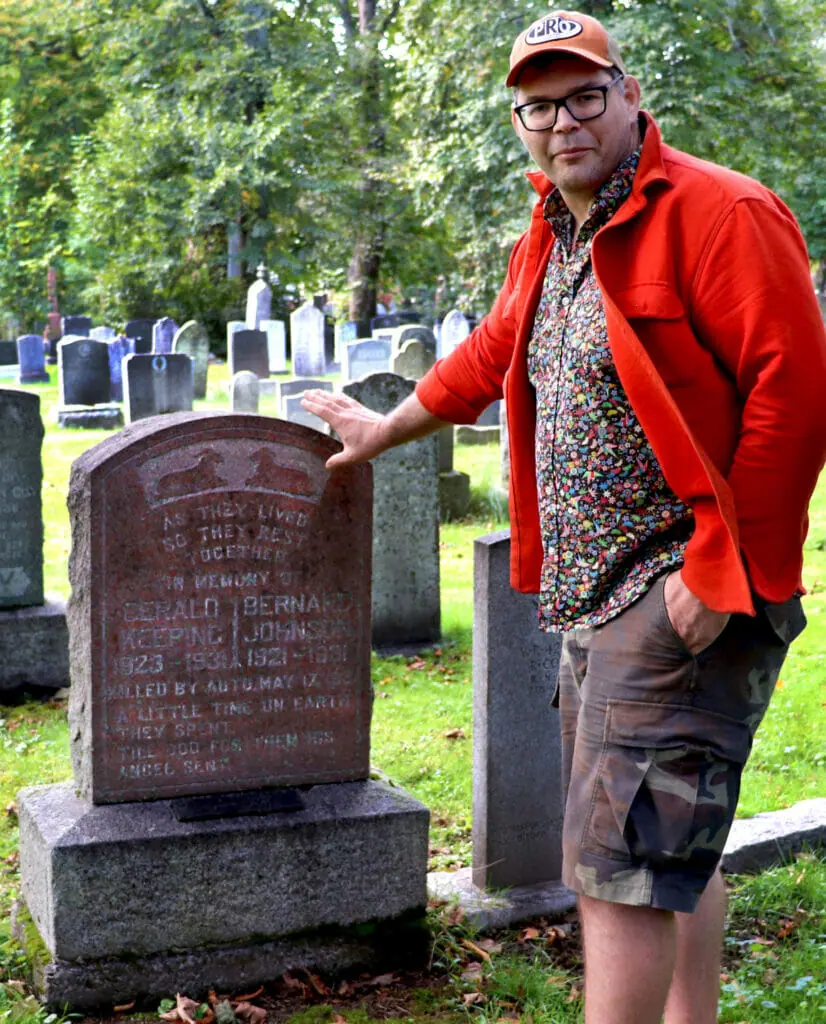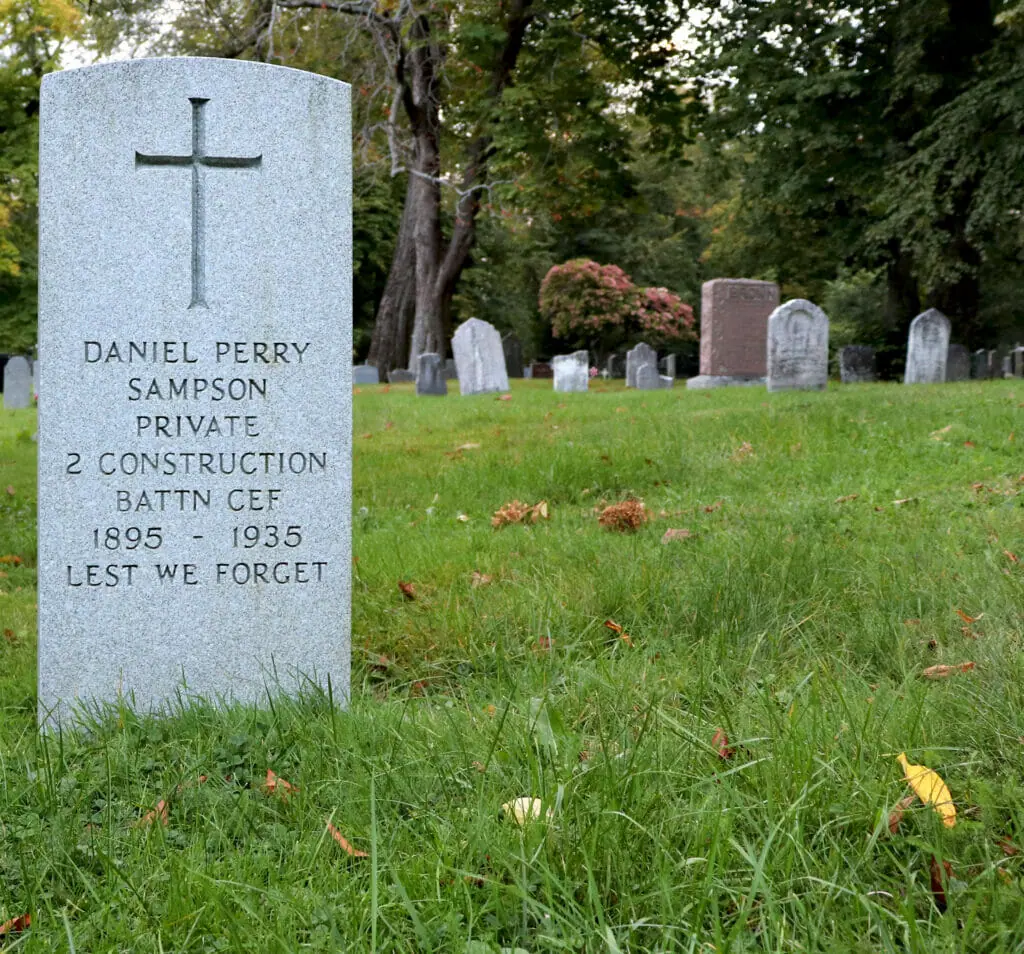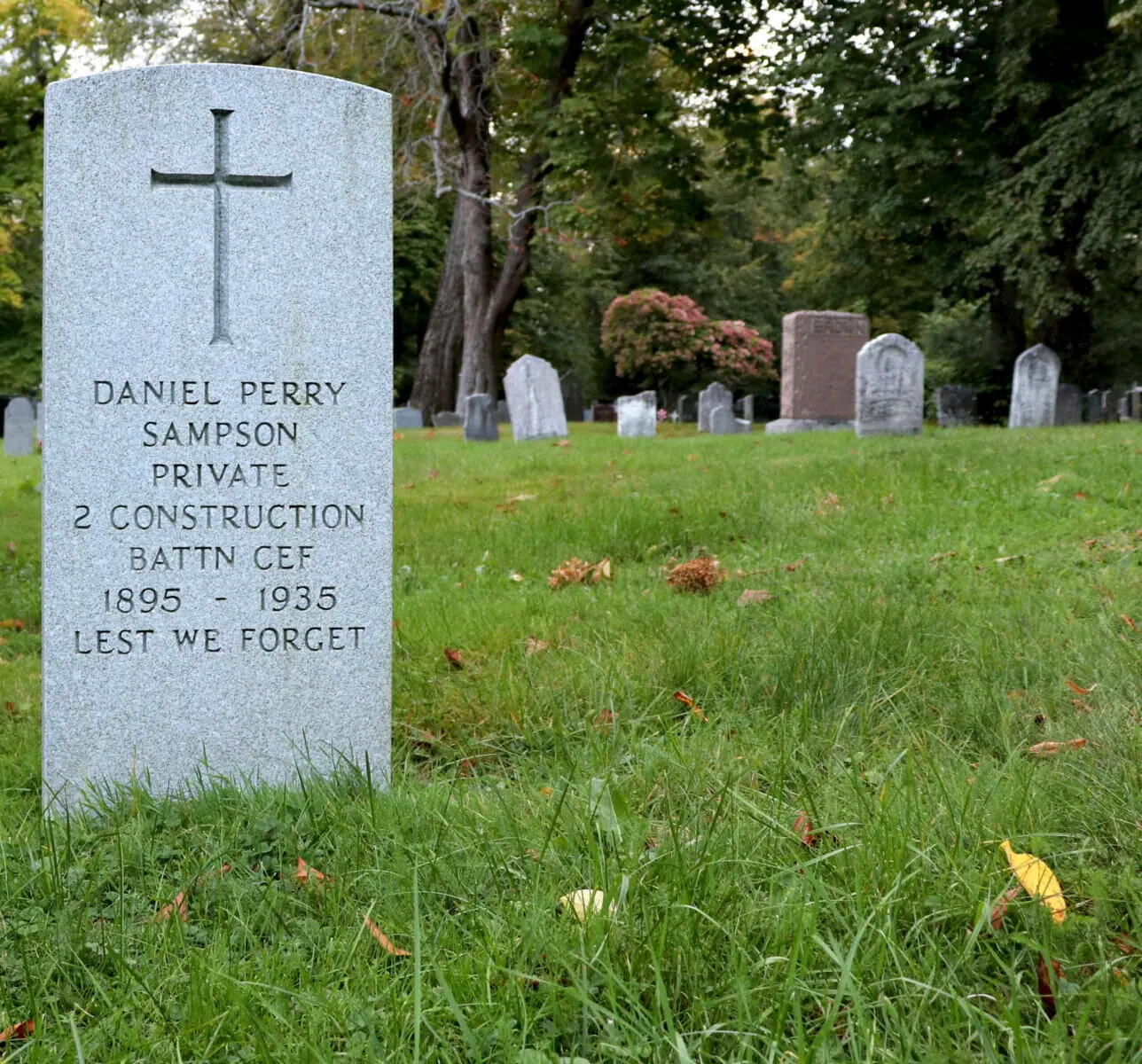It is 12:30 p.m. on Oct. 6, 2020, and the Robie Street entrance of Camp Hill Cemetery is bustling with activity. Sunlight filters into the burial ground through tree branches, breaking against the ornate obelisks and tombstones. This is nothing like the creepy crypts depicted in classic horror movies.

Craig Ferguson appears at the gate with a wave. Ferguson is a local TV producer, writer, sports announcer and history buff. Since July 2019, he has also been managing a Twitter page called Dead in Halifax. Ferguson posts photos, descriptions and stories of gravesites around the Halifax Regional Municipality (HRM). Ferguson says he likes “the constraints of Twitter because it forces you to be very tight with your writing.”
As we walk into the cemetery, Ferguson says he doesn’t find graveyards creepy, but they once gave him a feeling of unease.
“I used to avoid [Camp Hill Cemetery] all the time,” he says. “When my daughter was very young, our babysitter would walk her through here in the carriage. I thought, ‘She shouldn’t be walking through there.’ I grew up very superstitious.”
Ferguson compares this feeling to the way some people hold their breath when they drive past a graveyard. However, he says he has now become better acquainted with burial grounds.
To people who are scared of walking through cemeteries, Ferguson says, “I understand [the fear], but you’re missing out on something.”
A new perspective on cemeteries
Ferguson now sees cemeteries as a place to think, sate curiosity and enjoy the calm beauty. In the United States, he explains, there was a 19th century movement called the rural cemetery movement, which centred on the premise that, “Cemeteries could be places of quiet contemplation and for nature; that they should be more than a burial ground.”
Established in 1844, as a replacement for the Old Burying Ground on Barrington Street, Camp Hill Cemetery is a resting place for many notable figures including Viola Desmond, Joseph Howe and Alexander Keith.
Today, Ferguson points out some lesser known stories buried within these hallowed grounds. As he walks past Alexander Keith’s obelisk on the way to examine other stones, he stops to point out the various beer receptacles left standing against the nameplate. The Alexander Keith’s brand of beer is one of the most popular in the province.
“I mean, obviously, I can’t condone this, but people come in here and have a beer,” Ferguson says. “It’s a tradition and I think it’s obviously something that’s passed on from person to person. It’s not written down anywhere.”
Ferguson’s version of Halifax history
Ferguson can trace the history of Halifax and its largest institutions by stopping to talk about certain gravestones.

Strolling along, Ferguson spots a stone related to Dalhousie University. This is the resting place of the Nordbeck sisters. Ferguson explains the Nordbecks owned an estate called Studley Farm. One of the sisters was ill and after years of caring for her, the other sister hired a caregiver named Elizabeth Carey. After both sisters passed, they left the estate to Carey. Carey sold the land to Dalhousie and the property eventually became the building site of Dal’s Studley Campus.
A Dal alumnus rests beneath a small obelisk with the name Abraham Gesner. Ferguson says the obelisk was recently cleaned by the Dalhousie geology department. Gesner was the inventor of kerosene oil. Before his invention, whale blubber was often used as fuel for indoor lamps. Ferguson says he likes to believe Gesner has saved more whales than any other human, but he cannot be sure.
Moving closer to the opposite end of the graveyard, Ferguson explains, “The cemetery is historically segregated, and a lot of the graves in the Black section don’t have gravestones. How can we get into the history of that and figure out how to tell those stories?”
Among these stones are several from the No. 2 Construction Battalion, an all-Black military battalion from the First World War. One headstone for Daniel Perry Sampson was funded by the Last Post Fund, a group dedicated to ensuring no veteran is buried without a name.

Sampson’s story is filled with sadness, injustice and racism. It is the story of a man who suffered from mental illness after serving in the war and was arrested for the murder of two young white brothers named Edwin and Bramwell Heffernan. Facing an all-white jury, Sampson was found guilty. He was the last person to be sentenced to death by hanging in Halifax. Questions still remain on whether Sampson truly committed the murder. The further injustice lies in the implication the real murderer of the two boys may have gotten away.
Sampson’s story points out a crucial role of graveyards in preserving history, good and bad. Ferguson says, “Graveyards are museums of people.”
Ferguson furthers proves this when he points out the obelisk for the Young family. Ferguson tells the story of a Scottish-born merchant, John Young, who felt Nova Scotia could do more agriculturally and wrote several letters to local newspapers saying so. To write these letters, he used the pseudonym, “Agricola,” which lead to the Halifax street of the same name.
As it turns out, John Young had his portrait painted by a local artist, William Valentine, whose tombstone is a favourite of Ferguson’s. Starting as a painter, Valentine became the first photographer in Halifax. This, Ferguson explains, was a major turning point in technology for Haligonians and the world at the time.
Find more stories about local HRM graveyards through Ferguson’s Twitter feed Dead in Halifax.


Recent Comments